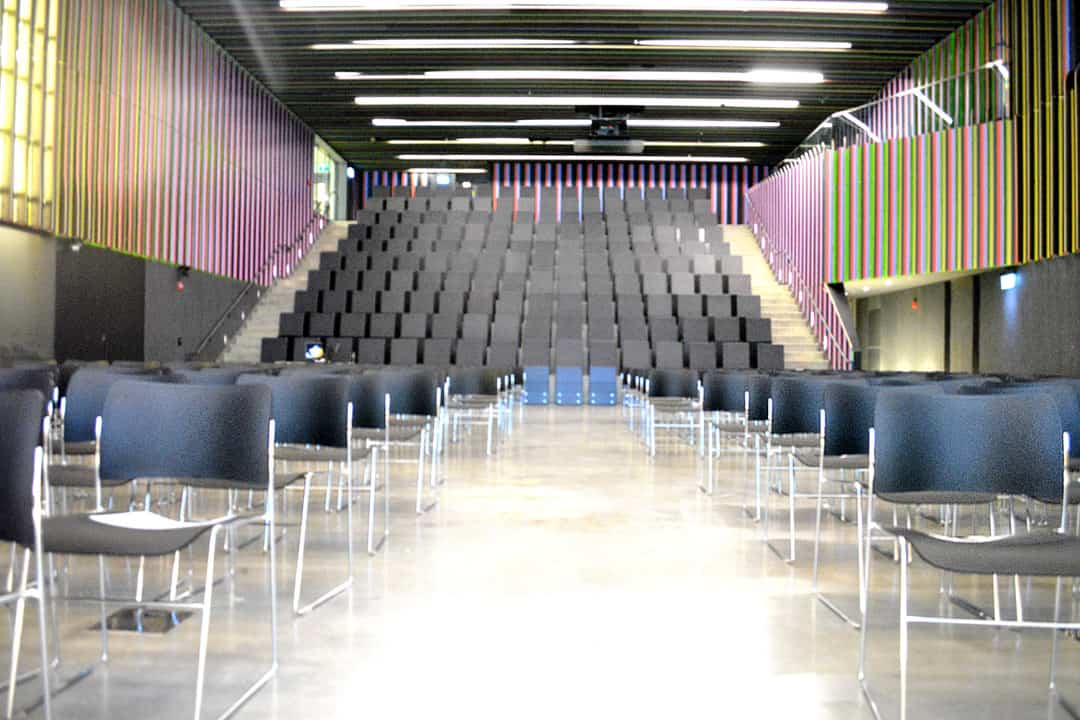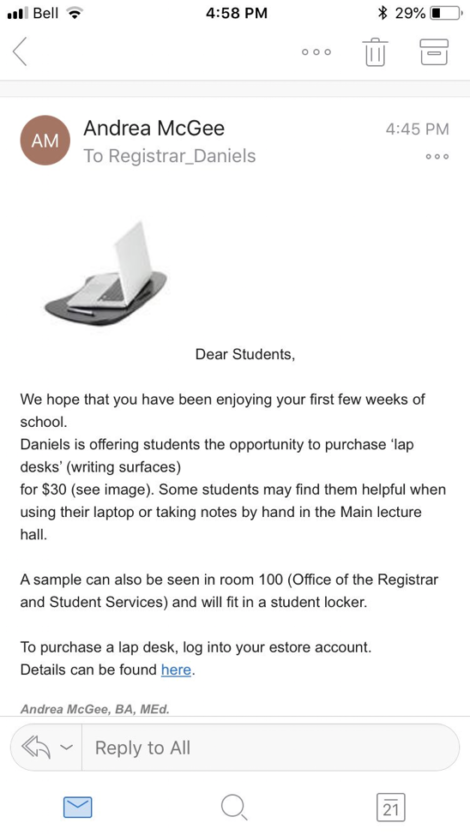Students at the John H. Daniels Faculty of Architecture, Landscape, and Design (FALD) are being sold $30 “lap desks” to use in the Main Hall of the Daniels Building, which was built without desks.
Concerns over the departmental decision to sell students these writing surfaces were brought up at the first town hall meeting of the Architecture and Visual Studies Student Union (AVSSU) on September 26, which was held in conjunction with staff from the FALD.
Assistant Dean Andrea McGee announced the decision in an email to FALD students on September 21.
“Daniels is offering students the opportunity to purchase ‘lap desks’ (writing surfaces) for $30,” she wrote. “Some students may find them helpful when using their laptop or taking notes by hand in the Main lecture hall.” The email included a link for students to purchase a lap desk.
McGee explained the decision to sell lap desks at the meeting, saying that she did consult “a couple of students” about whether they would prefer ownership of a lap desk over a rental.
Citing cleanliness concerns of using a used lap desk, McGee opted to sell lap desks for ownership. Explaining the price tag of $30, she said that the administration is “taking a loss on the lap desks,” and “it’s not that we’re trying to gouge the students.”
However, recognizing student preference for rentals, McGee said, “If now we’re saying that students would like to only rent them with a deposit, we can change that.”
Dean Richard Sommer provided specifics for the deposit system, explaining that there would be “a system where people can sign [the lap desk] out when they pay the deposit, and then they can return them at the end of the year, and have the deposit returned.”
But Paul Berkun-Drevnig, Architecture Comprehensive Representative of the AVSSU, said the faculty should cover the full cost of writing desks and lend them to FALD students for free. He said that the lack of writing surfaces was a “design error from the beginning.”
In response, Sommer said that the decision “was not an oversight,” but a “long and involved discussion with the Faculty, with our Architecture team, and with many people.”
He added that the decision was made because “the hall is meant for a variety of functions.” Lacking a writing surface enables chairs to be stacked and reorganized quickly. He also said that there is pedagogical value for the absence of writing surfaces, as it discourages students from “sitting at their desks on their laptop, doing other things, which is what occurs a lot in other kinds of classes.”
Professor Jeannie Kim added that there is literature that shows that “it’s actually better to take notes by hand first,” reinforcing that the decision was made for pedagogical purposes.
Berkun-Drevnig then suggested, as a “potential stopgap measure,” to include a “row of desks” with a writing surface at the back of the Main Hall.
Sommer responded by saying that he would “look into a scattered or assembled area for people who feel strongly about” attending lectures at desks.
“That’s a fair request, entirely,” said Sommer.
Editor’s Note (October 1, 3:22pm): This article has been updated to correct a quote by Sommer.
Editor’s Note (October 1, 3:44pm): This article has been updated to correct Berkun-Drevnig’s name.



